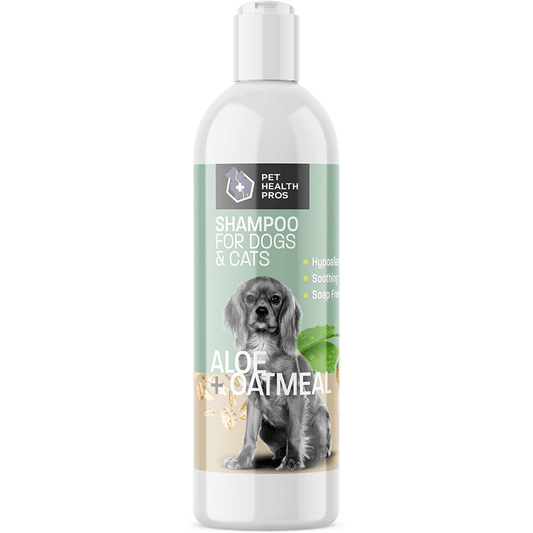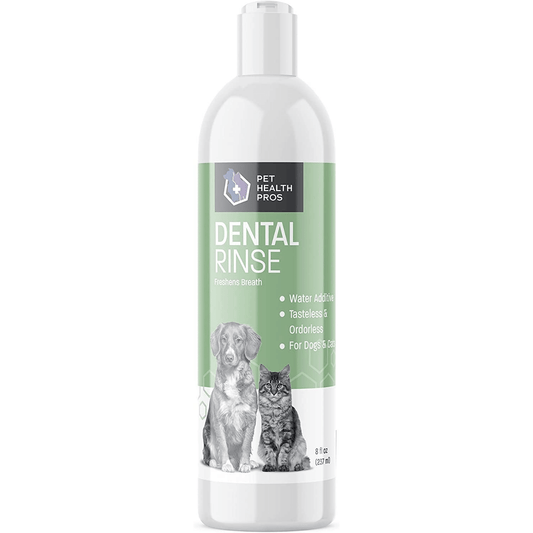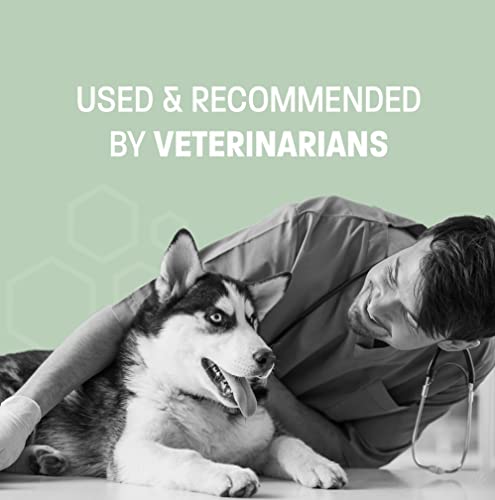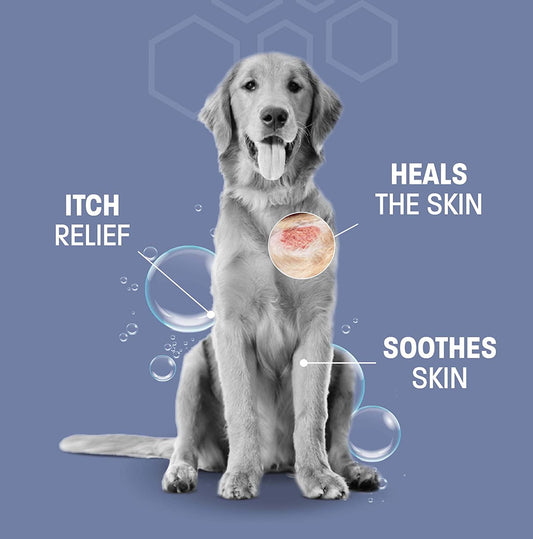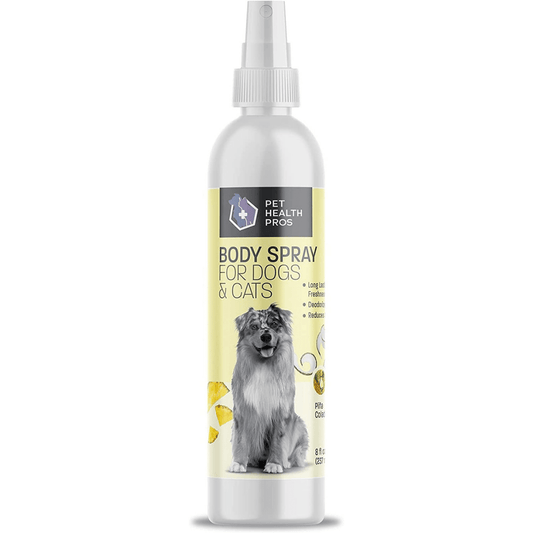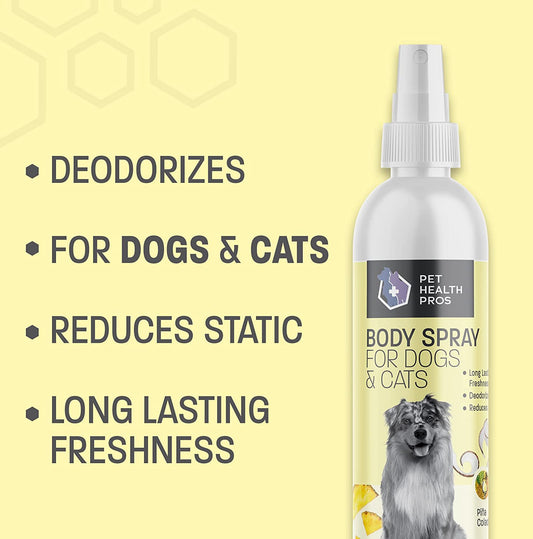Paw yeast infections can cause discomfort and health issues for dogs, but with proper knowledge and care, they can be effectively managed and prevented. Understanding the signs, causes, and treatments is crucial for maintaining your dog's paw health. This article delves into the identification, science, treatment, and prevention of paw yeast infections in dogs, while also highlighting the role of Pet Health Pros in providing expertly crafted solutions for your pet's needs.
Key Takeaways
- Recognize the symptoms of paw yeast infections, such as itchiness and discoloration, to catch them early.
- Understand that moisture and allergens are common causes of yeast infections in dogs' paws.
- Implement comprehensive treatment strategies that may include topical treatments, oral medications, and lifestyle changes.
- Prevent paw yeast infections by maintaining regular cleaning routines and considering dietary adjustments.
- Rely on Pet Health Pros for quality pet health supplies and expertise to support your dog's recovery and overall well-being.
Identifying Paw Yeast Infections in Dogs
Recognizing the Symptoms
Identifying a paw yeast infection in your dog begins with recognizing the telltale signs. Persistent licking or chewing at the paws is a common indicator, as the infection can cause itchiness and discomfort. You may also notice a distinct odor, resembling that of corn chips or moldy bread, emanating from the paws. This is due to the compounds produced by the yeast as it grows.
Symptoms of a yeast infection in a dog's paws include:
- Redness and swelling
- Brown discoloration of the nails
- Scaly or greasy skin
- Hair loss around the affected area
Early detection is crucial for effective treatment. If you observe any of these symptoms, it's important to address them promptly to prevent further discomfort and potential complications.
Yeast infections can be particularly stubborn and may require a comprehensive approach to treatment. Utilizing products from reputable companies like Pet Health Pros, known for their collaboration with veterinarians and use of top-grade ingredients, can be beneficial in managing your dog's condition.
Understanding the Causes
The development of a yeast infection in your dog's paws can be attributed to a variety of factors. Moisture is a key contributor, as it creates an ideal environment for yeast to thrive. Dogs that engage in excessive licking of their paws can inadvertently increase the area's moisture and warmth, fostering the conditions for yeast overgrowth.
Certain breeds with dense fur or those with compromised immune systems are more susceptible to yeast infections. Additionally, allergies can cause discomfort and lead to more licking and scratching, which damages the skin and allows for yeast to colonize.
Environmental factors also play a significant role. Humid climates, or exposure to wet conditions without proper drying, can predispose a dog's paws to yeast infections.
Understanding these causes is crucial for effective prevention and treatment. By addressing the underlying issues, you can help maintain the health of your dog's paws and prevent the discomfort associated with yeast infections.
When to Seek Veterinary Care
It's crucial to monitor your dog's symptoms and understand when they warrant professional attention. Persistent discomfort, such as constant licking or chewing of the paws, is a clear sign that a vet visit is necessary. Other indicators include:
- Swelling or redness that doesn't improve
- Foul odor emanating from the paws
- Lesions or discharge
If your dog's condition doesn't improve with initial home care, or if you notice any of the above symptoms, it's time to consult your veterinarian. Early intervention can prevent more serious complications and ensure a quicker recovery.
Remember, the skin is an organ that requires care. A yeast infection in your dog's paws can signify an underlying health issue that needs to be addressed by a professional.
Seeking veterinary care is not just about treating the current infection; it's about understanding the root cause and preventing future occurrences. Your vet can provide a comprehensive treatment plan that may include medications, dietary changes, and lifestyle adjustments to support your dog's overall health.
The Science Behind Yeast Infections
What is a Yeast Infection?
A yeast infection, particularly common in dogs, is caused by the overgrowth of fungi known as Malassezia. These organisms thrive in warm, moist environments, making a dog's paws an ideal location for infection. Yeast infections can lead to discomfort and itchiness, often prompting dogs to lick or chew at their paws excessively.
Yeast infections are not just a surface issue; they can indicate an underlying health problem that needs to be addressed. It's essential to understand the symptoms and seek treatment to prevent further complications.
Yeast infections can be identified by a combination of clinical signs and diagnostic tests. Here's a brief overview of what to look for:
- Persistent paw licking or chewing
- Redness and swelling
- Foul odor
- Discharge or crusty residue on the paws
Early detection and treatment are crucial for managing yeast infections and ensuring your dog's comfort and health.
Why Do Dogs' Paws Get Infected?
Dogs' paws are in constant contact with the ground, making them susceptible to various infections, including those caused by yeast. Warm, moist environments are particularly conducive to the growth of yeast, which thrives in such conditions. Factors such as a weakened immune system, allergies, and hormonal imbalances can also predispose a dog's paws to yeast infections.
Yeast infections in dogs' paws can lead to discomfort and more serious health issues if left untreated.
The following list outlines common reasons for paw yeast infections in dogs:
- Prolonged exposure to wet conditions
- Compromised immunity due to underlying health conditions
- Allergic reactions to food or environmental triggers
- Injury to the paw, creating an entry point for infection
Understanding these factors is crucial for preventing and treating paw yeast infections effectively.
The Role of Diet and Environment
The health of your dog's paws is significantly influenced by their diet and the environment they live in. A balanced diet is crucial in preventing yeast overgrowth, as certain foods can exacerbate the condition. High-carb diets, for instance, may contribute to yeast infections because yeasts thrive on sugars, which are abundant in carbohydrates.
Environmental factors also play a role. Humidity and warmth can create ideal conditions for yeast to flourish. Regular grooming and cleaning can help manage these environmental factors, reducing the risk of paw yeast infections.
-
Dietary Adjustments:
- Limit sugars and carbs
- Incorporate anti-fungal foods
- Consult with a vet for a tailored diet plan
-
Environmental Management:
- Keep living areas dry and clean
- Avoid letting your dog walk in damp areas
- Regular paw inspections and cleaning
It's essential to address both diet and environmental conditions to effectively manage and prevent paw yeast infections in dogs. By doing so, you can help maintain the natural balance of your dog's skin microbiome, ensuring their paws remain healthy.
Comprehensive Treatment Strategies
Topical Treatments and Soaks
When addressing a dog's paw yeast infection, topical treatments and soaks are often the first line of defense. These methods are designed to directly target the affected area, providing relief and initiating the healing process. A variety of antifungal and antibacterial solutions can be used for soaks, which help to reduce yeast and bacteria on the paws.
Medicated shampoos and ointments are also commonly recommended for topical application. These products contain ingredients that are effective against the yeast causing the infection. It's important to follow the instructions provided by your veterinarian or the product label to ensure proper usage.
- Step 1: Clean the paws with a gentle, pet-safe cleanser.
- Step 2: Prepare the soak solution as directed.
- Step 3: Soak the dog's paws for the recommended amount of time.
- Step 4: Dry the paws thoroughly after soaking.
- Step 5: Apply any prescribed topical medication.
Consistency in treatment is key to overcoming a paw yeast infection. Regular application of the prescribed treatments will help to ensure the infection is fully addressed and can prevent recurrence.
Remember that while various treatment options for dog ear yeast infections include over-the-counter antifungal treatments, home remedies, and veterinary assistance, paw yeast infections require specific care. Regular cleaning, proper hygiene, and dietary changes are key for prevention.
Oral Medications and Supplements
In addition to topical treatments, oral medications and supplements play a crucial role in managing your dog's paw yeast infection. These systemic treatments help to address the overgrowth of yeast from within, supporting the body's natural defenses.
Antifungal medications prescribed by a veterinarian can effectively reduce yeast levels, but they must be used with care to avoid potential side effects. Supplements, such as probiotics, can also be beneficial in restoring the natural balance of your dog's gut flora, which is essential for overall health and can impact the condition of their paws.
It's important to follow your vet's guidance on dosage and duration of treatment to ensure the best outcome for your pet.
Here is a list of common oral treatments for paw yeast infections in dogs:
- Prescription antifungal drugs
- Probiotic supplements
- Omega-3 fatty acids for skin health
- Antioxidants to support immune function
Remember, while oral treatments are effective, they should be part of a comprehensive approach that includes proper hygiene, diet, and environmental adjustments.
Lifestyle Adjustments for Recovery
In addition to medical treatments, making certain lifestyle adjustments can be crucial for your dog's recovery from a paw yeast infection. Ensure your dog's environment is clean and dry, as yeast thrives in moist conditions. Regularly wash bedding and any fabric your dog comes into contact with using a hypoallergenic detergent.
Diet also plays a significant role in managing yeast infections. Incorporate probiotics and foods with natural antifungal properties to help balance your dog's gut flora and boost their immune system. Avoid foods high in sugars and carbohydrates, which can fuel yeast growth.
Exercise is beneficial for overall health, but during recovery, it's important to monitor your dog's activity levels. Too much activity can cause excessive licking or chewing of paws, exacerbating the condition.
Lastly, consider the use of medicated solutions to combat related issues such as ear yeast infections, which can often accompany paw infections. Always use vet-approved products and follow their guidance for both relief and prevention of future infections.
Preventative Measures for Paw Health
Regular Paw Cleaning and Care
Maintaining your dog's paw health is crucial in preventing yeast infections. Regular cleaning is the first line of defense against the pathogens that cause these infections. After walks or playtime, gently wash your dog's paws with warm water and a mild, pet-safe soap. Pat them dry thoroughly, as moisture can promote yeast growth.
Inspection of your dog's paws should become a part of your daily routine. Look for signs of redness, swelling, or discharge, which could indicate the beginning of an infection. Keeping the fur between the paw pads trimmed can also reduce the risk of yeast proliferation.
Consistent paw care not only helps in preventing infections but also strengthens the bond between you and your pet.
Here are some simple steps to incorporate into your dog's paw care routine:
- Rinse paws with clean water after outdoor activities.
- Dry paws completely, especially between the toes.
- Apply a veterinarian-approved paw balm to maintain paw pad moisture balance.
- Regularly trim the fur around the paws to minimize debris accumulation.
- Check for and remove any foreign objects that may have become lodged in the paw pads.
Choosing the Right Pet Health Supplies
Selecting the appropriate pet health supplies is crucial for preventing and treating paw yeast infections. Medicated solutions, such as creams or wipes with antifungal properties, are essential. These products are specifically designed to target and alleviate the discomfort caused by yeast infections in your dog's paws.
When choosing supplies, consider the quality of ingredients. Pet Health Pros, for instance, offers products that are crafted in collaboration with veterinarians and made with locally sourced, top-grade ingredients. This ensures that your pet is getting the best defense against infections.
It's important to remember that not all pet health supplies are created equal. Look for options that come with a satisfaction guarantee and are backed by a brand with a strong commitment to pet well-being.
Lastly, accessibility is key. Ensure that the products you choose are readily available for purchase, whether through an online store or physical retail outlets. Pet Health Pros provides a convenient Amazon storefront for easy access to their full range of pet health products, including those that combat yeast infections.
Dietary Considerations for Preventing Yeast Overgrowth
The diet of your dog plays a pivotal role in preventing yeast overgrowth. High-carbohydrate diets can fuel the growth of yeast, so it's essential to evaluate your pet's food. Opt for diets that are low in starches and sugars, and rich in proteins and healthy fats.
Probiotics are another key element in maintaining a balanced gut flora, which can help keep yeast at bay. Incorporating fermented foods or supplements that contain live beneficial bacteria can support your dog's immune system and overall health.
It's not just about what to add, but also what to remove. Eliminating or reducing ingredients that are known to cause allergies or sensitivities in dogs can significantly lower the risk of yeast infections.
Here is a simple list of dietary adjustments to consider for preventing yeast infections in dogs:
- Reduce intake of grains and sugars
- Increase protein and healthy fats
- Include probiotics in the diet
- Identify and eliminate potential allergens
Remember, each dog is unique, and dietary changes should be discussed with your veterinarian to ensure they meet your dog's specific needs.
Pet Health Pros: Your Partner in Paw Care
Expertly Crafted Solutions for Yeast Infections
At Pet Health Pros, we understand the distress that paw yeast infections can cause for both dogs and their owners. Our range of products is specifically designed to combat these infections, providing relief and promoting paw health. Our antifungal shampoos and Chlorhexidine wipes are formulated to address the root of the infection, ensuring that your dog can return to their happy, active self.
Quality is at the forefront of our solutions. Each product is made with locally sourced, top-grade ingredients, reflecting our commitment to superior pet care. With over fifty years of combined experience in veterinary medicine, our products are not only effective but also safe for your beloved pet.
Pet Health Pros offers top-rated antifungal shampoos, tear stain removers, Chlorhexidine wipes, and ear care products for dogs. Expert advice and quality solutions provided.
Our customer-centric approach means we're always here to support you through your dog's recovery. From our educational content to our personalized customer service, we ensure that you have all the resources you need for your dog's health and happiness.
The Importance of Quality Ingredients
The foundation of effective treatment for your dog's paw yeast infection lies in the quality of the ingredients used in their care products. Pet Health Pros understands that the right ingredients can make a significant difference in the efficacy of treatments and the overall health of your pet. High-quality ingredients mean fewer fillers, less chance for irritation, and more potent therapeutic effects.
When it comes to your dog's health, the purity and source of ingredients are non-negotiable. Our commitment to superior ingredients is reflected in our collaboration with veterinarians and our use of locally sourced, top-grade materials.
Here are some reasons why quality ingredients matter:
- They ensure that the product is safe and non-toxic for your pet.
- They provide more reliable and consistent healing properties.
- They support the long-term health and well-being of your dog.
By choosing products from Pet Health Pros, you are selecting solutions that are not only effective but also safe and beneficial for your dog's recovery and maintenance. Our products are backed by a 100% satisfaction guarantee, ensuring that you and your dog are happy with the results.
Our Commitment to Your Dog's Health and Happiness
At Pet Health Pros, we understand that your dog's well-being is paramount. Our commitment extends beyond providing superior pet health supplies; it's about ensuring a happier, healthier life for your furry companion. We strive for excellence in every product we offer, ensuring that each item is crafted with care and backed by our 100% satisfaction guarantee.
Our products are the result of collaboration with veterinarians and are made with locally sourced, top-grade ingredients. We believe in the power of quality and the difference it makes in treating conditions like paw yeast infections. Our approach is holistic, considering not just the immediate ailment but the overall health of your pet.
Our promise to you and your pet is to continuously improve our products and services, catering to the evolving needs of pets and their owners.
We are proud to be a community-focused brand, with over fifty years of combined experience in Veterinary Medicine and Animal Health Management. Our expertise-driven formulations are developed by professionals with deep industry knowledge, ensuring that your dog receives the best possible care. Below is a list of our key commitments:
- Expertise-Driven Formulations
- Quality Ingredients
- Customer-Centric Services
- Consistent Improvement
- Community Engagement
For pet owners seeking trusted health solutions, Pet Health Pros stands as a beacon of reliability and innovation. We are your partner in paw care, dedicated to the health and happiness of your dog.
At Pet Health Pros, we understand that your furry friends are more than just pets; they're family. That's why we're dedicated to providing top-notch paw care to keep your companions happy and healthy. Don't let minor issues become major problems—visit our website today for expert advice, tips, and services that cater to your pet's unique needs. Together, we can ensure your pet enjoys a long, joyful life.
Conclusion
In conclusion, understanding and treating your dog's paw yeast infection is crucial for their comfort and overall health. By recognizing the signs, implementing preventative measures, and seeking appropriate treatments, you can ensure your furry friend's paws remain healthy. Remember to consult with your veterinarian for personalized advice and consider high-quality products from trusted brands like Pet Health Pros. With their commitment to expertly crafted solutions, backed by a wealth of veterinary experience, Pet Health Pros offers superior pet health supplies that cater to the well-being of your pet. Embrace their brand promise of healthier pets and happier lives, and explore their range of products on their Amazon storefront or online store for convenient and reliable pet health solutions.
Frequently Asked Questions
What are the common symptoms of a paw yeast infection in dogs?
Symptoms include itching, redness, swelling, a foul odor, and brownish discoloration of the paws. Dogs may also excessively lick or chew at their paws.
What causes yeast infections in dogs' paws?
Yeast infections can be caused by a weakened immune system, allergies, hormonal imbalances, or moist environments that promote yeast growth.
How can I prevent my dog from getting a paw yeast infection?
Preventative measures include regular paw cleaning, maintaining a balanced diet, avoiding allergens, and keeping your dog's paws dry.
Are there any home remedies for treating my dog's paw yeast infection?
Home remedies may include apple cider vinegar soaks or coconut oil application, but always consult your vet before trying home treatments.
When should I visit a vet for my dog's paw yeast infection?
Visit a vet if you notice persistent symptoms, if the condition worsens, or if your dog appears to be in pain or discomfort.
Does Pet Health Pros offer products to help with paw yeast infections?
Yes, Pet Health Pros offers a range of expertly crafted pet health supplies, including products to help manage and treat paw yeast infections.


